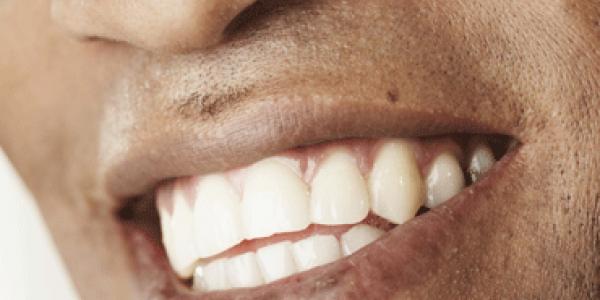BY SYLVESTER OJENAGBON
A certain level of physiological tooth wear is expected throughout life, as the cumulative effects of various wear mechanisms take their toll. Sadly, tooth wear is becoming more common in younger people, while some studies suggest that males may have a higher incidence of tooth wear than females. Severe tooth wear that may require treatment is reported to be present in 2-10% of adults and children and the predicted percentage of adults with severe tooth wear increases from 3% at age 20 to 17% at age 70.
Excessive tooth wear refers to the accelerated or abnormally high loss of tooth enamel and dentin due to non-carious processes, exceeding what is considered normal for a person’s age. This can be caused by several mechanisms, including erosion, attrition, abrasion, and abfraction.
Reported to be the most common form of tooth wear, erosion is the loss of tooth structure due to chemical dissolution by acids and is caused mainly by dietary and intrinsic acids and frequent consumption of acidic foods and drinks like soft drinks, citrus fruits, and juices. It can also be caused by medical conditions like gastro-oesophageal reflux disease (GERD), eating disorders (bulimia nervosa and anorexia nervosa), and certain medications, such as sleeping pills and some antidepressants.
Advertisement
Attrition is the wearing out of tooth enamel and dentin due to tooth-to-tooth contact, primarily from grinding or clenching (bruxism). This is often caused by bruxism and malocclusion, habitual teeth grinding or clenching, often during sleep, and misaligned bite, which can cause teeth to rub against each other abnormally.
Abrasion is the loss of tooth structure due to friction from external forces other than tooth-to-tooth contact and can be caused by using a hard-bristled toothbrush or brushing too vigorously, some toothpastes that contain abrasive particles, and using teeth as tools, for example, opening bottles or packages with teeth.
A wedge-shaped or V-shaped loss of tooth structure at the gumline, abfraction is often attributed to flexural forces from clenching or grinding. Some experts believe it is caused by stress from bruxism, while others consider it a form of abrasion.
Advertisement
Reduced saliva production can equally increase the risk of tooth wear, as saliva helps neutralise acids and remineralise teeth, while certain professions, like wine tasting (due to frequent acid exposure) or competitive swimming (due to chlorine exposure), can similarly increase the risk of excessive tooth wear.
It is important to note that humans generally have four types of teeth. They are incisors, canines, premolars, and molars, but molars and premolars, particularly those in the back of the mouth, are generally more susceptible to wear and tear due to their location and the way they interact during chewing. Although the front teeth are not as prone to wear as molars, they can experience wear from abrasion (for example, chewing on hard objects) or erosion from acidic substances. It is also essential to note that different types of tooth wear can occur individually or in combination, making diagnosis and treatment sometimes challenging.
The truth is that excessive tooth wear can lead to a range of problems and can affect the enamel and dentin, making teeth more vulnerable to damage and potentially impacting overall oral health. As enamel wears down, the underlying dentin becomes exposed, leading to sensitivity to cold, hot, and sweet foods and drinks. Tooth wear can equally cause pain, ranging from mild discomfort to sharp, shooting pain, especially when chewing or during temperature changes. Teeth can also become shorter, more translucent, or develop a worn-down appearance, affecting a person’s smile and facial aesthetics.
Severe tooth wear can affect the way teeth come together (occlusion), leading to difficulties with chewing and speaking. Worn enamel is more susceptible to decay, increasing the risk of cavities, and excessive wear can contribute to jaw pain and temporomandibular joint (TMJ) disorders due to changes in bite alignment. Difficulty chewing due to worn teeth can affect digestion and nutrient absorption.
Advertisement
To protect your teeth from excessive wear, you need to maintain a healthy diet, reduce sugary and acidic food and drink intake, and practice good oral hygiene with fluoride toothpaste and regular flossing. You equally need to minimise consumption of sodas, citrus fruits, sports drinks, and other acidic beverages, and rinse with water after consuming acidic items to help neutralise the acid.
If you are in the habit of grinding your teeth (bruxism), a custom-fitted mouthguard can protect your teeth from excessive wear caused by grinding and clenching, especially during sleep. You can similarly explore relaxation techniques before bed, consider cognitive behavioural therapy, or talk to your dentist about a nightguard.
Flossing once daily to remove plaque and food particles that contribute to enamel erosion and decay can also be helpful; so can avoiding brushing immediately after consuming acidic foods or drinks, as this can worsen enamel erosion. You may consider waiting at least 30 minutes or using a fluoride mouth rinse.
You equally have to make it a habit to visit your dentist regularly for checkups and cleanings, as early detection and treatment of tooth wear can prevent further damage. If you have eating disorders, GERD, or other conditions that can contribute to tooth wear, work with your doctor and dentist to manage the conditions. And you have to stop or avoid chewing on hard objects like ice or pens, as these can cause chipping and abrasion.
Advertisement
Your teeth were built to last a lifetime, so learn to take proper care of them to make them last your entire life. With smarter dental care habits and regular checkups, you can keep your teeth strong and avoid unnecessary damage to them. Start today to protect your enamel to avoid pain, sensitivity, and expensive treatments tomorrow.
Ojenagbon, a health communication expert and certified management trainer and consultant, lives in Lagos.
Advertisement
Views expressed by contributors are strictly personal and not of TheCable.












